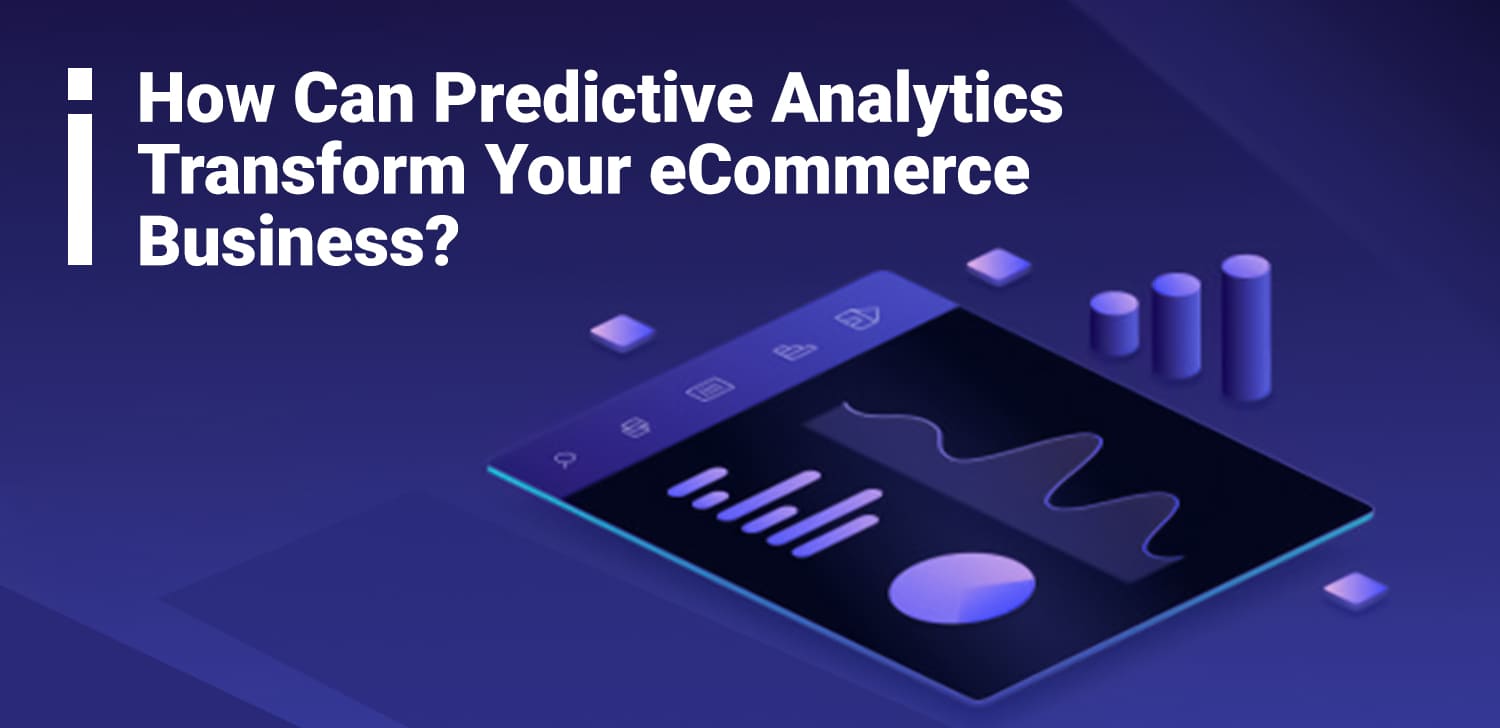December 27, 2023
In the dynamic landscape of e-commerce, staying ahead of the curve is not just a competitive advantage but a necessity. The ability to anticipate customer behaviors, understand market trends, and optimize operations can make or break an online business. This is where predictive analytics steps in as a game-changer for e-commerce enterprises, offering a transformative approach to decision-making and business strategies. The integration of predictive analytics in e-commerce platforms empowers businesses to make data-driven decisions, foresee market trends, and deliver tailored shopping experiences.
What are Predictive Analytics
Fundamentally, predictive analytics for e-commerce involves using data, statistical algorithms, and machine learning methods to forecast future results based on past performance. Predictive analytics can assist companies in e-commerce and retail by helping them anticipate consumer behavior, optimize their marketing plans, and subsequently increase operational efficiency.
Thus, predictive analytics can help e-commerce enterprises reduce their logistical costs. By using past data analysis to predict future demand, businesses may streamline their supply chain and cut down on wasteful spending.
Big Data, Predictive Analytics and Customer Experience (CX)
Implementing predictive analytics in e-commerce enables businesses to anticipate customer preferences, optimize inventory management, and craft personalized marketing strategies for enhanced overall performance.
Fundamentally, predictive analytics for e-commerce involves using data, statistical algorithms, and machine learning methods to forecast future results based on past performance. Predictive analytics can assist companies in e-commerce and retail by helping them anticipate consumer behavior, optimize their marketing plans, and subsequently increase operational efficiency.
Thus, predictive analytics can help e-commerce enterprises reduce their logistical costs. By using past data analysis to predict future demand, businesses may streamline their supply chain and cut down on wasteful spending.
Personalized Customer Experiences
One of the most significant impacts of predictive analytics in e-commerce lies in its ability to deliver personalized customer experiences. By analyzing historical customer data, such as purchase history, browsing behavior, and preferences, businesses can create targeted and relevant marketing campaigns. Personalization not only enhances customer satisfaction but also increases the likelihood of conversion.
Imagine a scenario where an online clothing store uses predictive analytics to analyze a customer’s past purchases, browsing history, and social media engagement. Armed with this information, the store can tailor product recommendations, send personalized promotions, and even optimize the layout of the website to match the customer’s preferences. This level of personalization not only boosts customer loyalty but also significantly improves the chances of making successful sales.
Importance of Good Customer Experience in eCommerce
More than ever, customer experience personalization is essential. Companies are paying more and more attention to it in an effort to differentiate themselves from the competition and use it to their advantage. According to a McKinsey survey, personalization can result in a 20% rise in customer satisfaction rates, which is roughly equal to a 10% gain in sales and conversion rates.
To defeat the competition, for instance, Amazon and Zappos both strive to provide excellent customer service and a positive shopping experience. Consumers choose these internet merchants because they are confident in receiving dependable assistance and safe, secure service.
Although no firm has failed entirely as a result of a negative customer experience, it can have a significant impact and is now a crucial factor for companies. It might make all the difference in bringing in new business and keeping hold of devoted clientele.
Main Reasons to Improve Customer Experience
Take a look at the measures below if you’re not sure if it makes sense to devote time and resources to big data technology. Raising customer satisfaction levels makes sense for a number of reasons. These are a few of the most significant advantages.
Sales will increase concurrently if these crucial measures are taken into account and consistently enhanced.
Pricing Optimization
Setting the right price for products is a delicate balancing act. Price too high, and you risk losing customers to competitors; price too low, and you may not cover your costs. Predictive analytics can help businesses optimize pricing strategies by analyzing market trends, competitor pricing, and customer behavior.
Dynamic pricing models, powered by predictive analytics, enable businesses to adjust prices in real-time based on various factors such as demand, competitor pricing, and even customer behavior. This ensures that prices are always competitive and reflective of market dynamics, maximizing revenue and profit margins.
Increase Sale
The majority of e-commerce businesses want to increase sales and profits, so it is much more difficult to do so if the whole client experience is ignored.
Sales growth has been demonstrated to be correlated with customer experience. Research indicates that brands that establish an emotional bond with their visitors surpass sales by an astounding 85%. Conversely, a 2% rise in customer retention rates has been shown to result in higher profits.
Enhanced Customer Retention Strategies
Acquiring new customers is undoubtedly important, but retaining existing customers is equally—if not more—crucial for the sustained success of an e-commerce business. Predictive analytics can aid in developing effective customer retention strategies by identifying patterns that indicate potential churn.
By analyzing data on customer interactions, purchase history, and engagement metrics, businesses can proactively identify customers who are at risk of churning. Armed with this information, targeted retention campaigns can be launched, offering personalized incentives or promotions to re-engage customers and strengthen their loyalty.
Raise Brand Authority:
Loyal and satisfied consumers spread the news about your brand for free, which benefits your company. Customers’ level of satisfaction with your company’s services and products can be determined by measuring customer satisfaction scores (CSAT) and net promoter ratings (NPS).
Customers trust other customers more than any promotional marketing strategy, and happy customers will spread the word and come across as genuine and natural.
Conclusion:
In the rapidly evolving landscape of online retail, leveraging predictive analytics in e-commerce is not just a trend; it’s a strategic imperative for anticipating customer needs and optimizing operational efficiency. E-commerce companies and shops can increase sales by personalizing their offerings and marketing campaigns and retaining loyal customers with the use of predictive customer analytics. The essential words here are personalization and proactiveness: predictive analytics enables companies to be more proactive than reactive in terms of customer experience and engagement. AI for industries is revolutionizing the way businesses operate, streamlining processes, and unlocking unprecedented efficiencies across diverse sectors.
Determine which client groups are at risk of departing, assist in gaining them back, and finally personalize to upsell to create more value by anticipating their requirements and buying habits and seeing specific trends.






